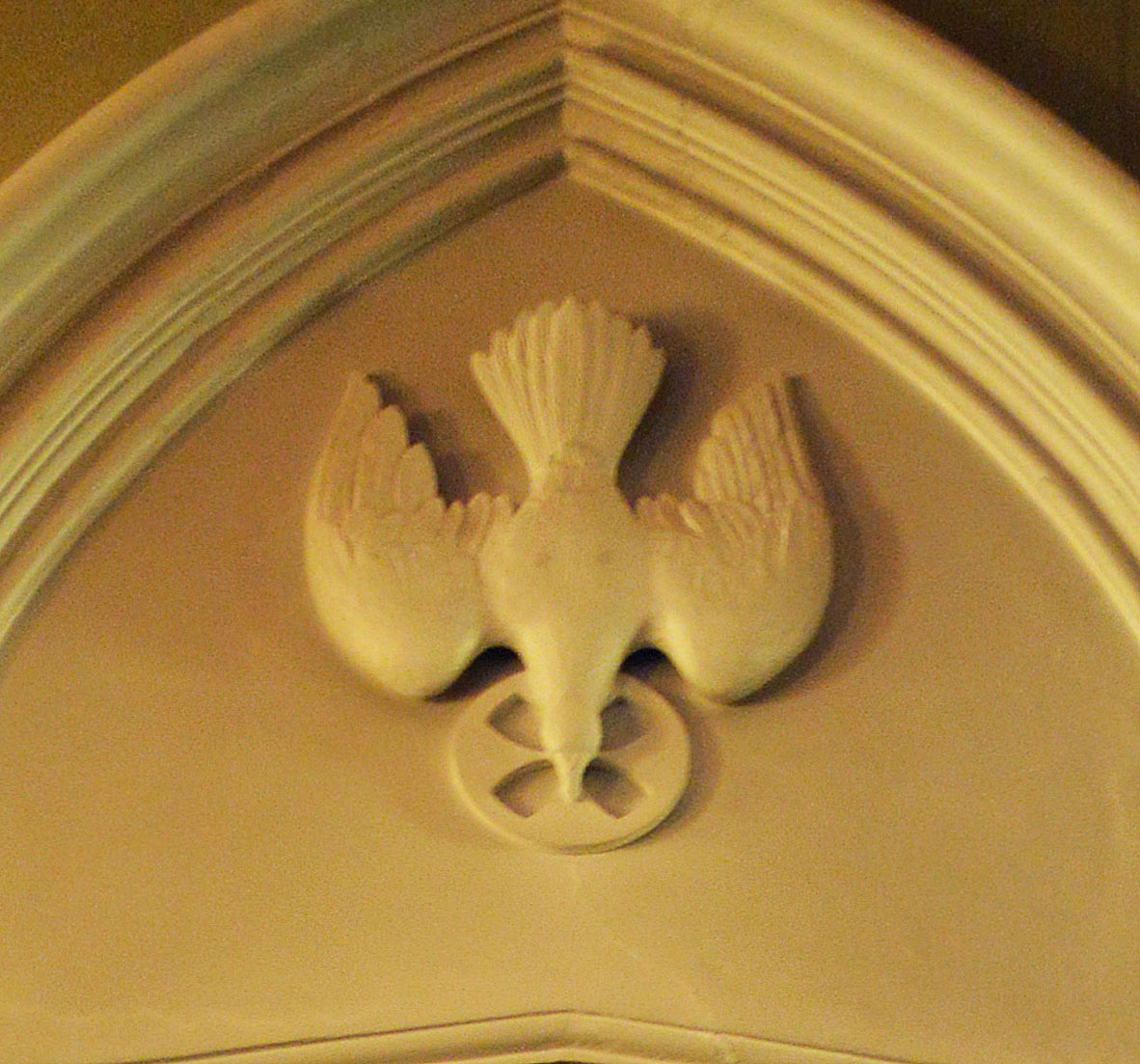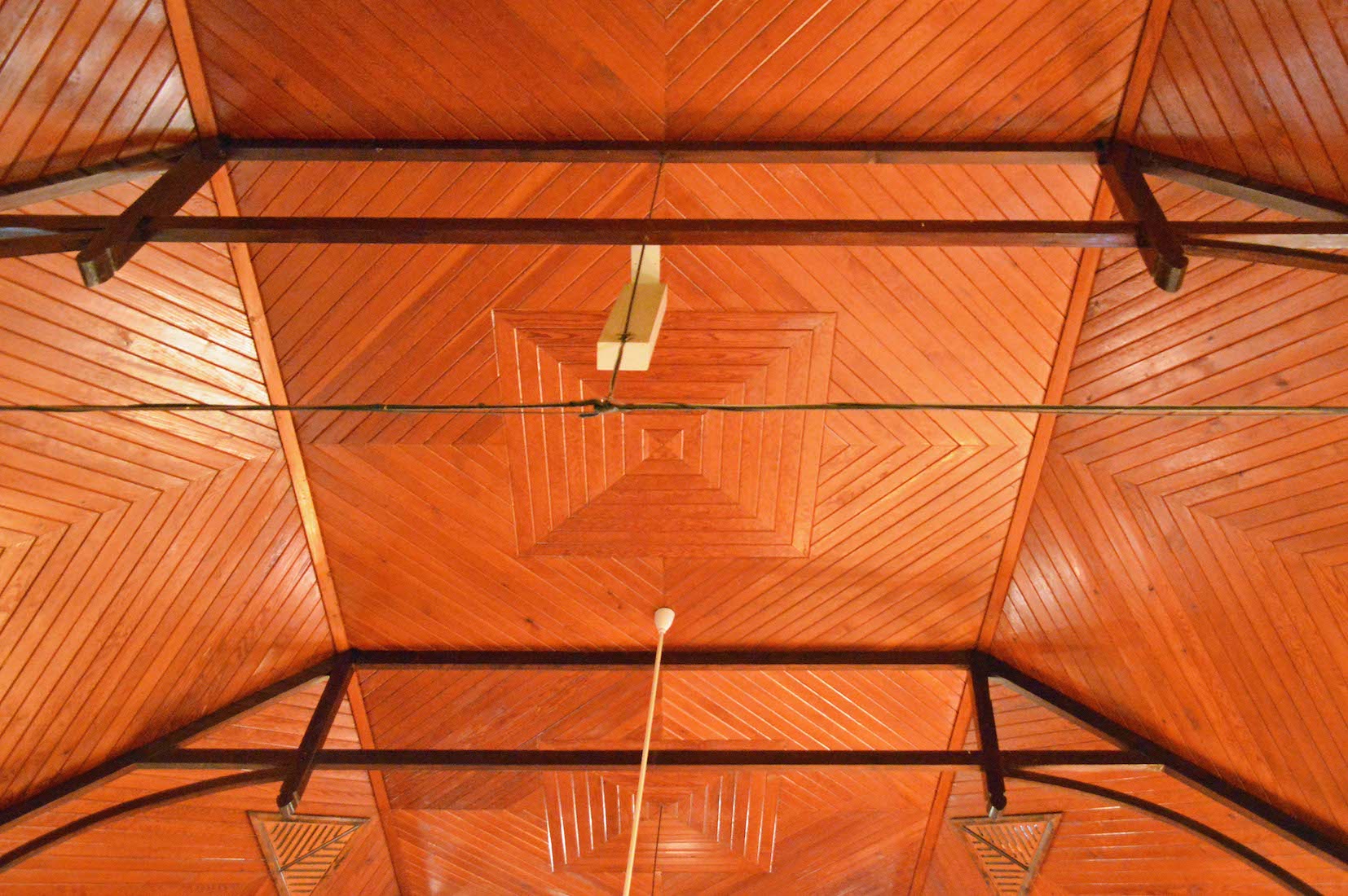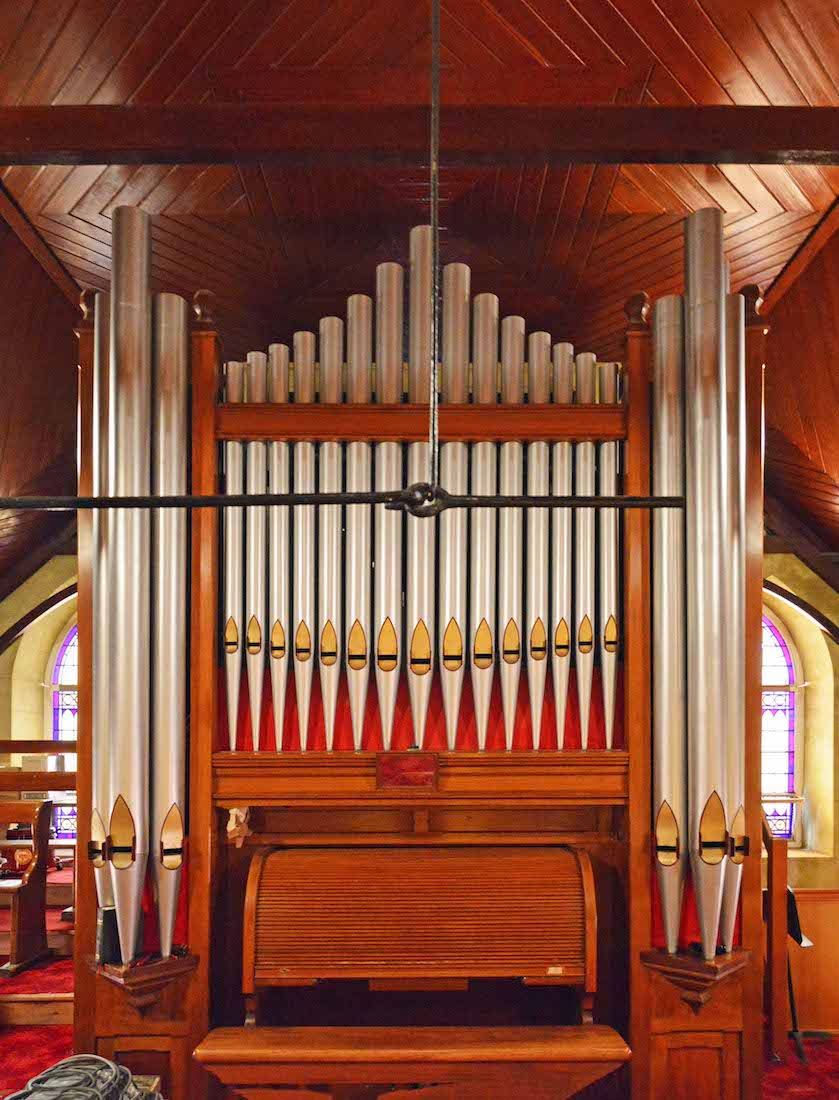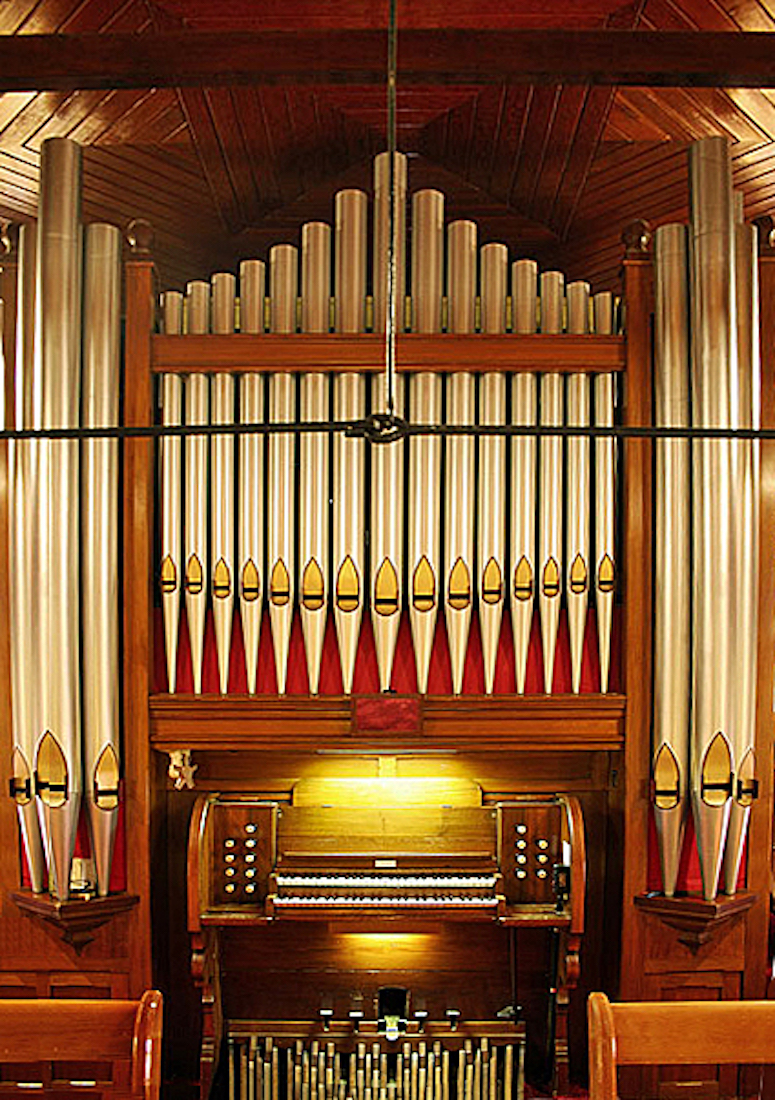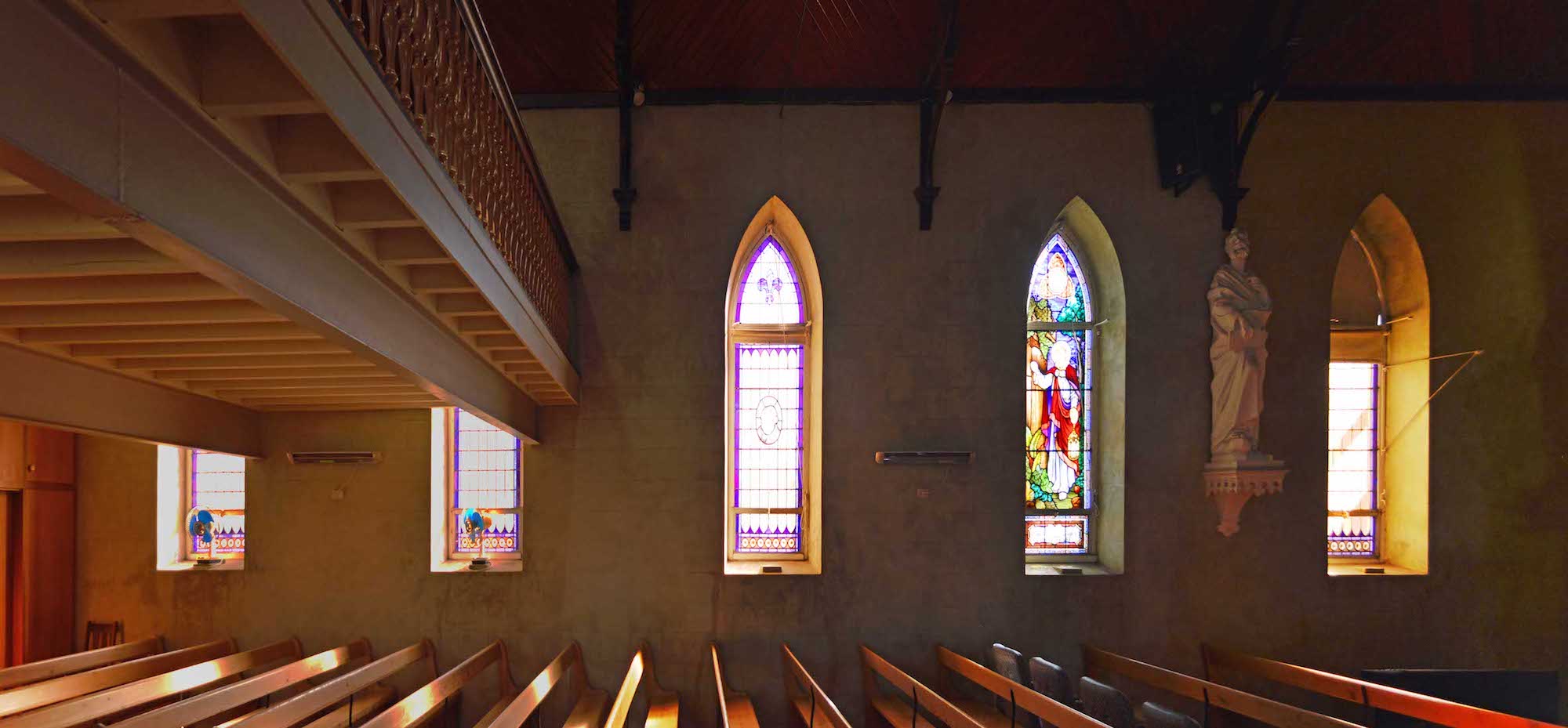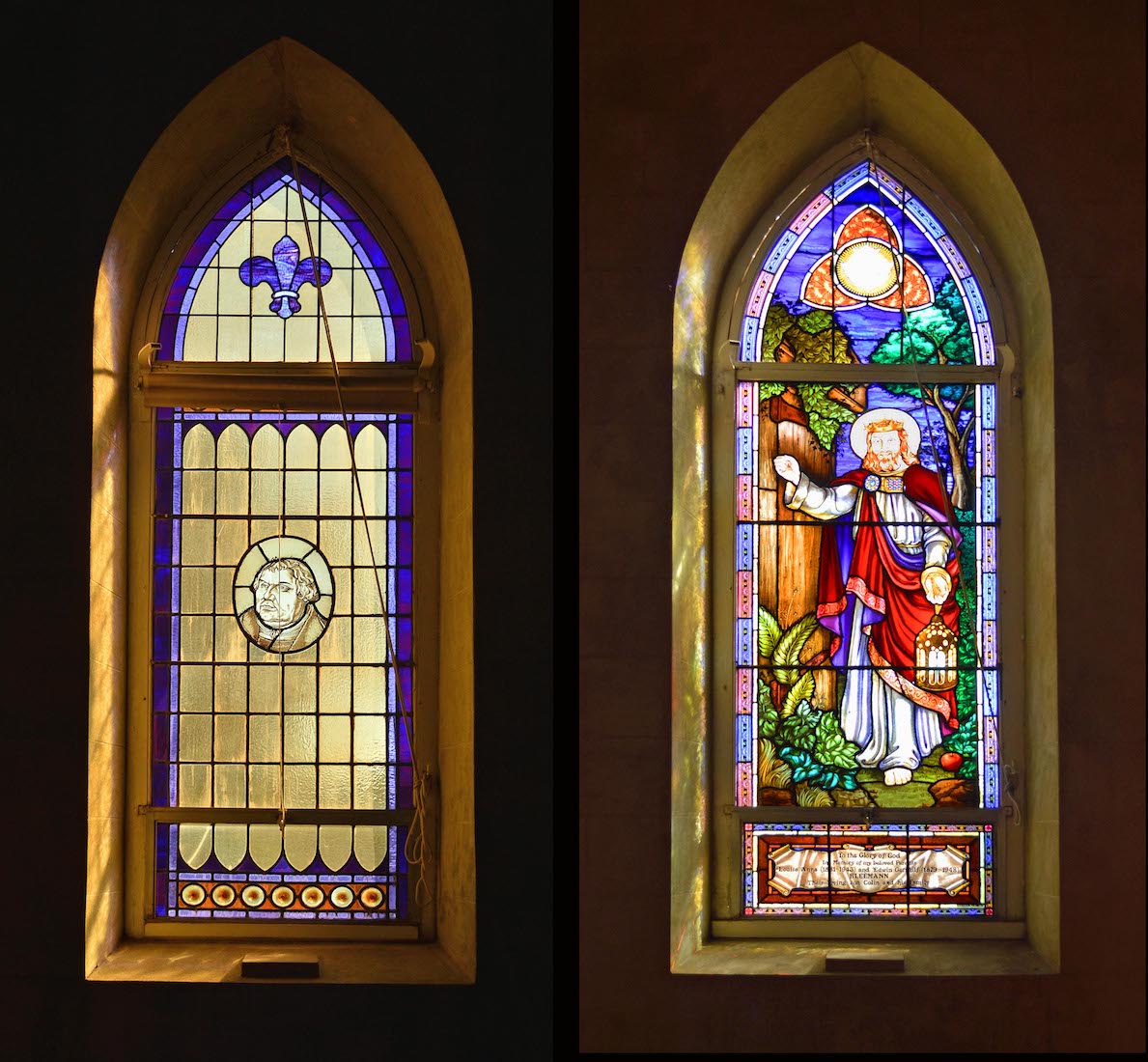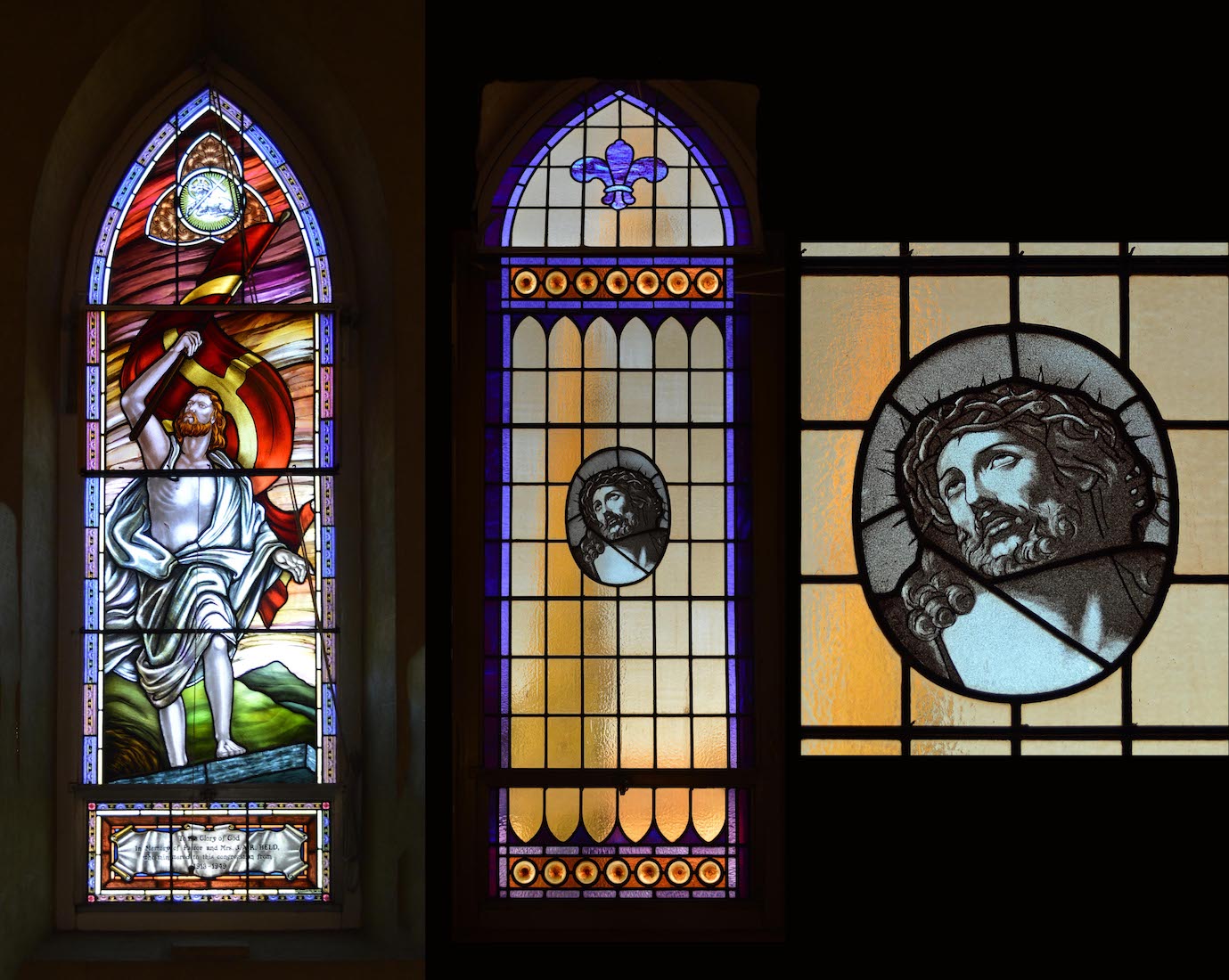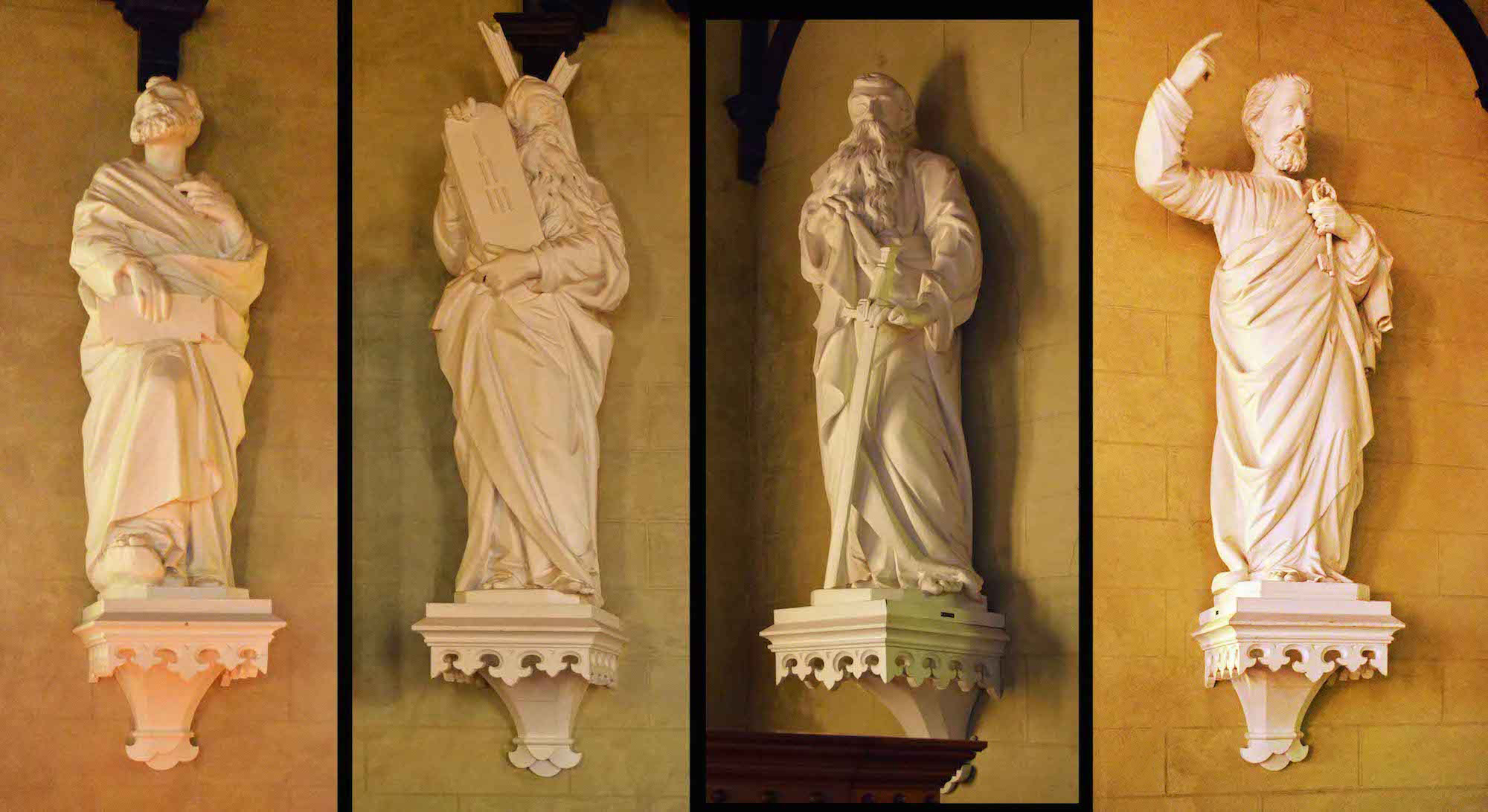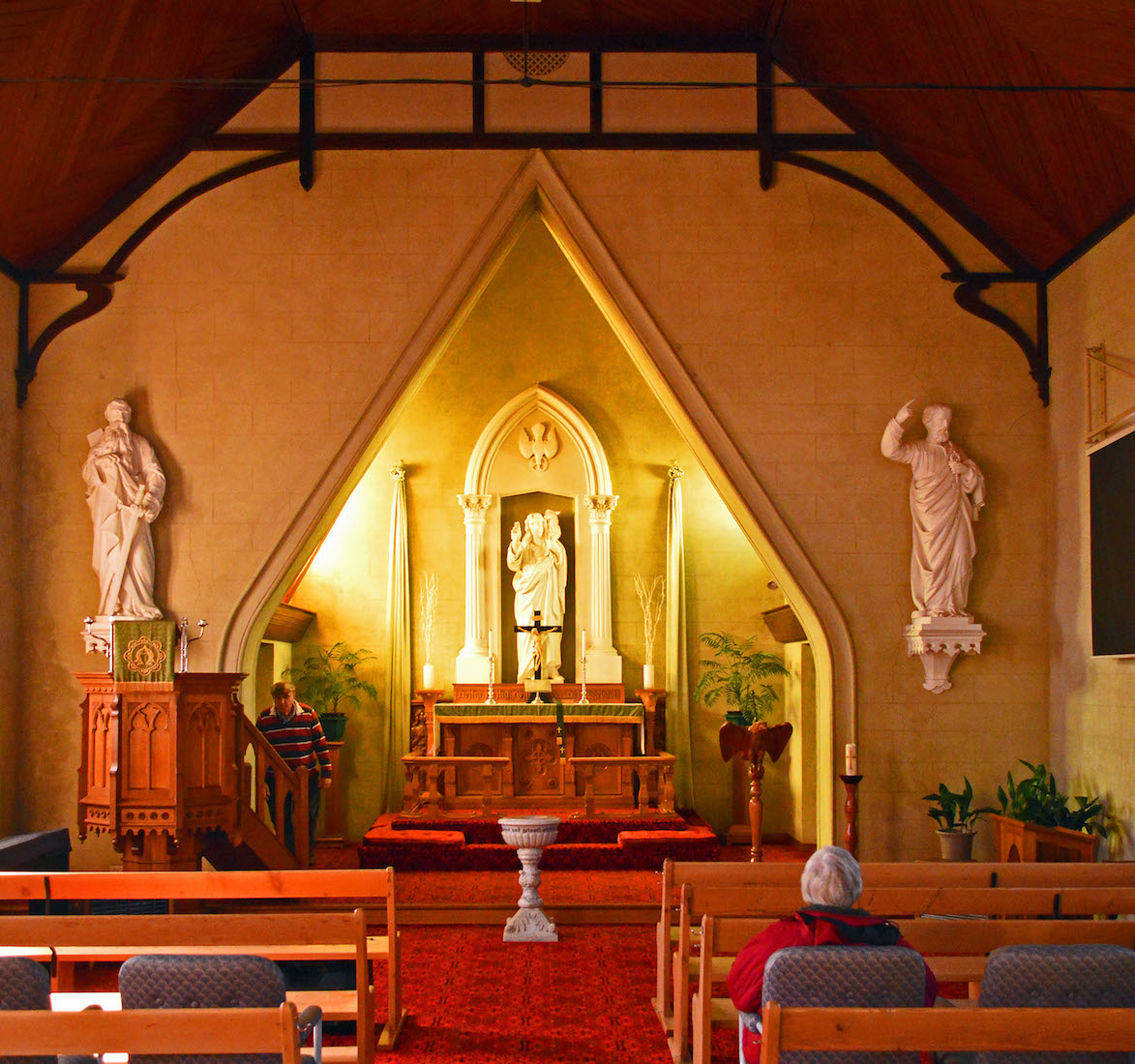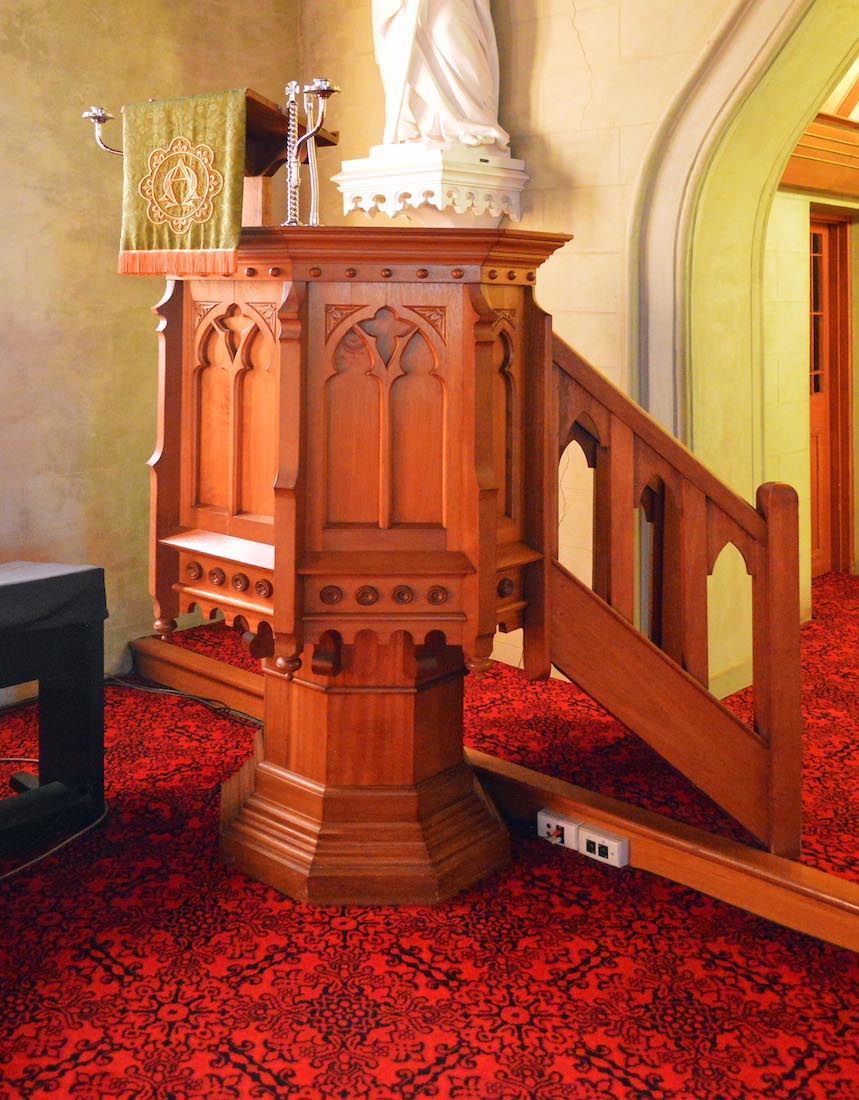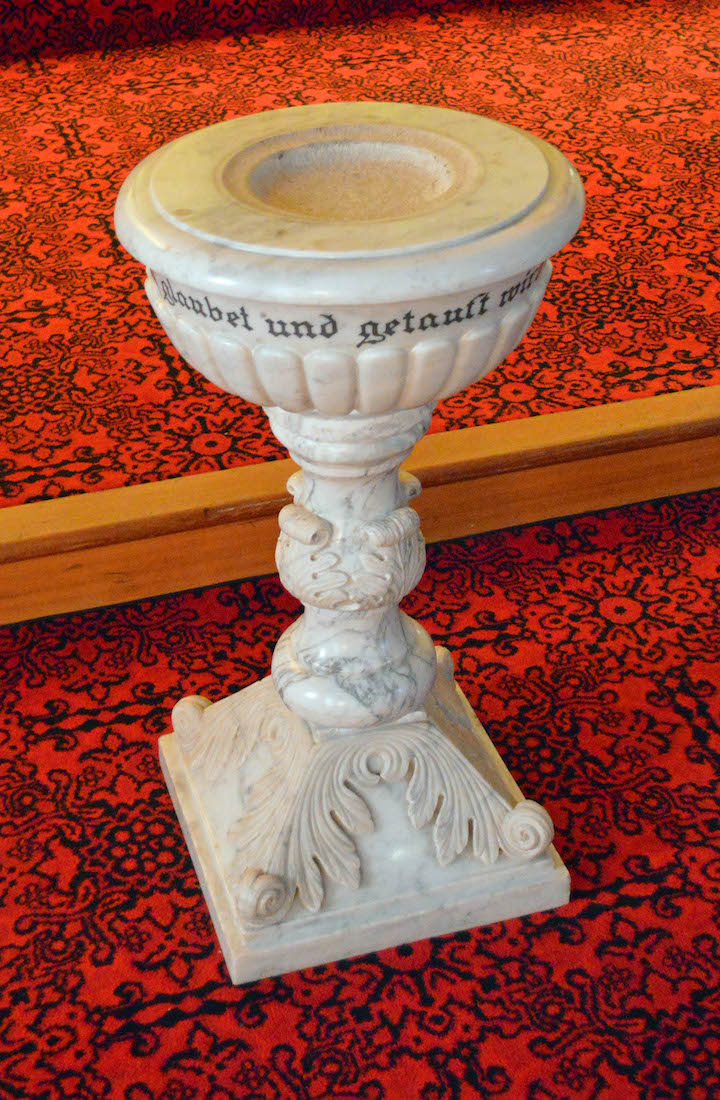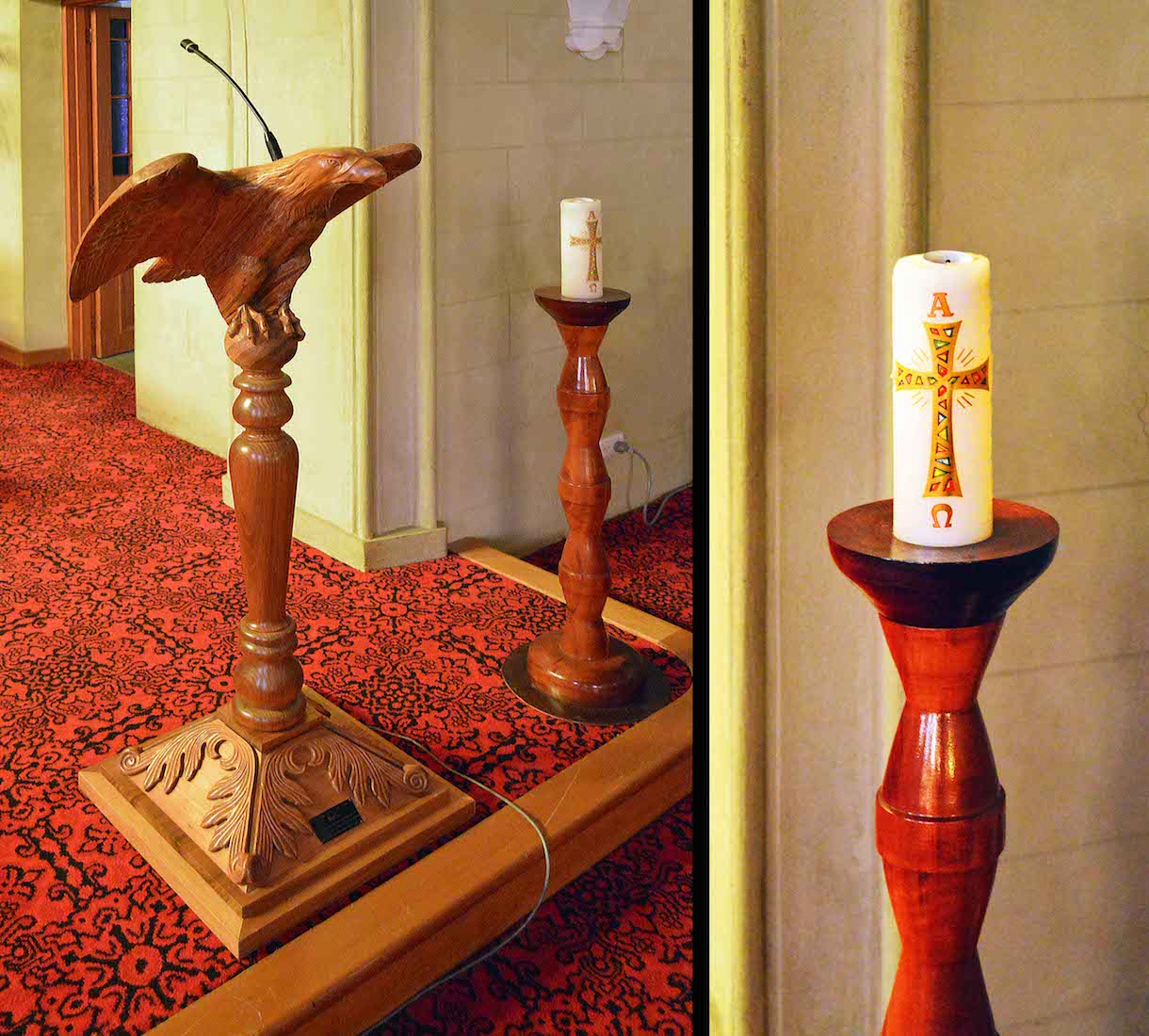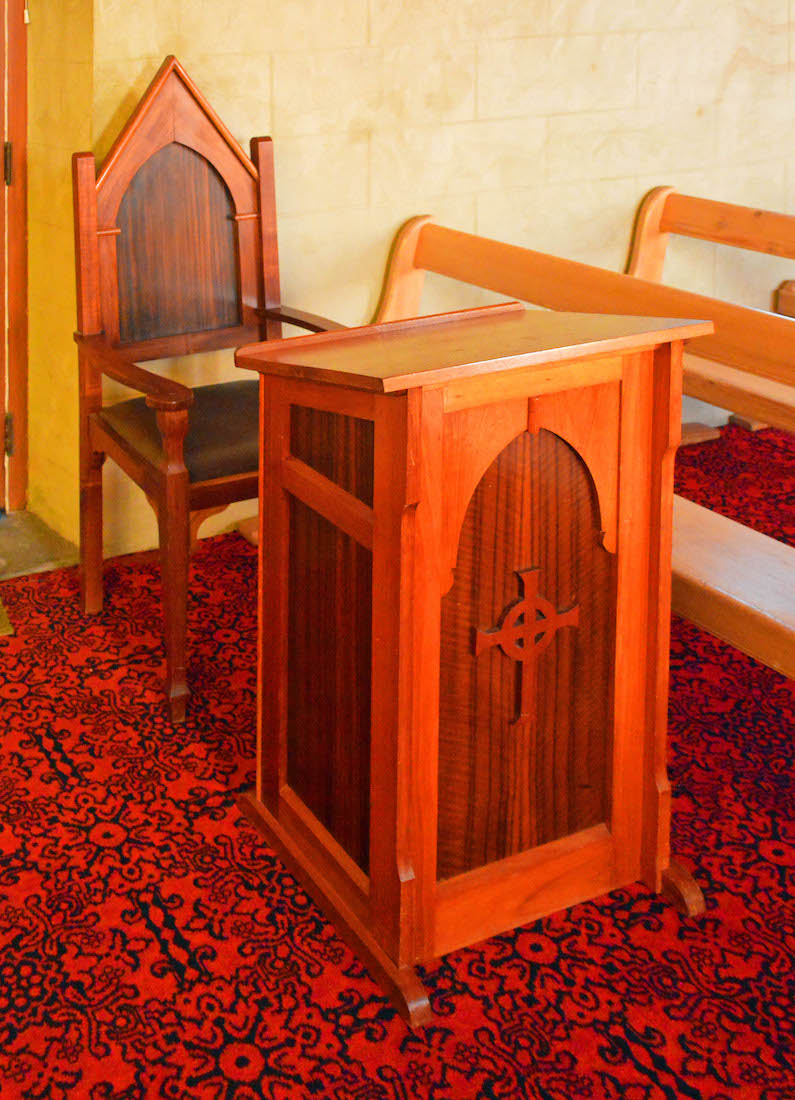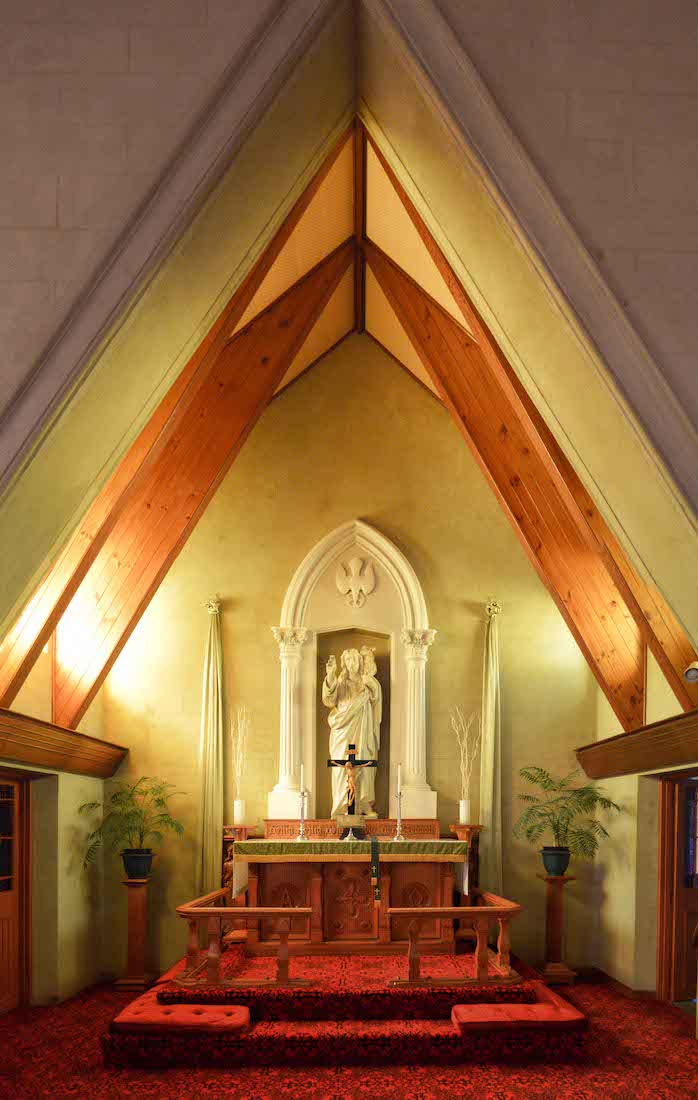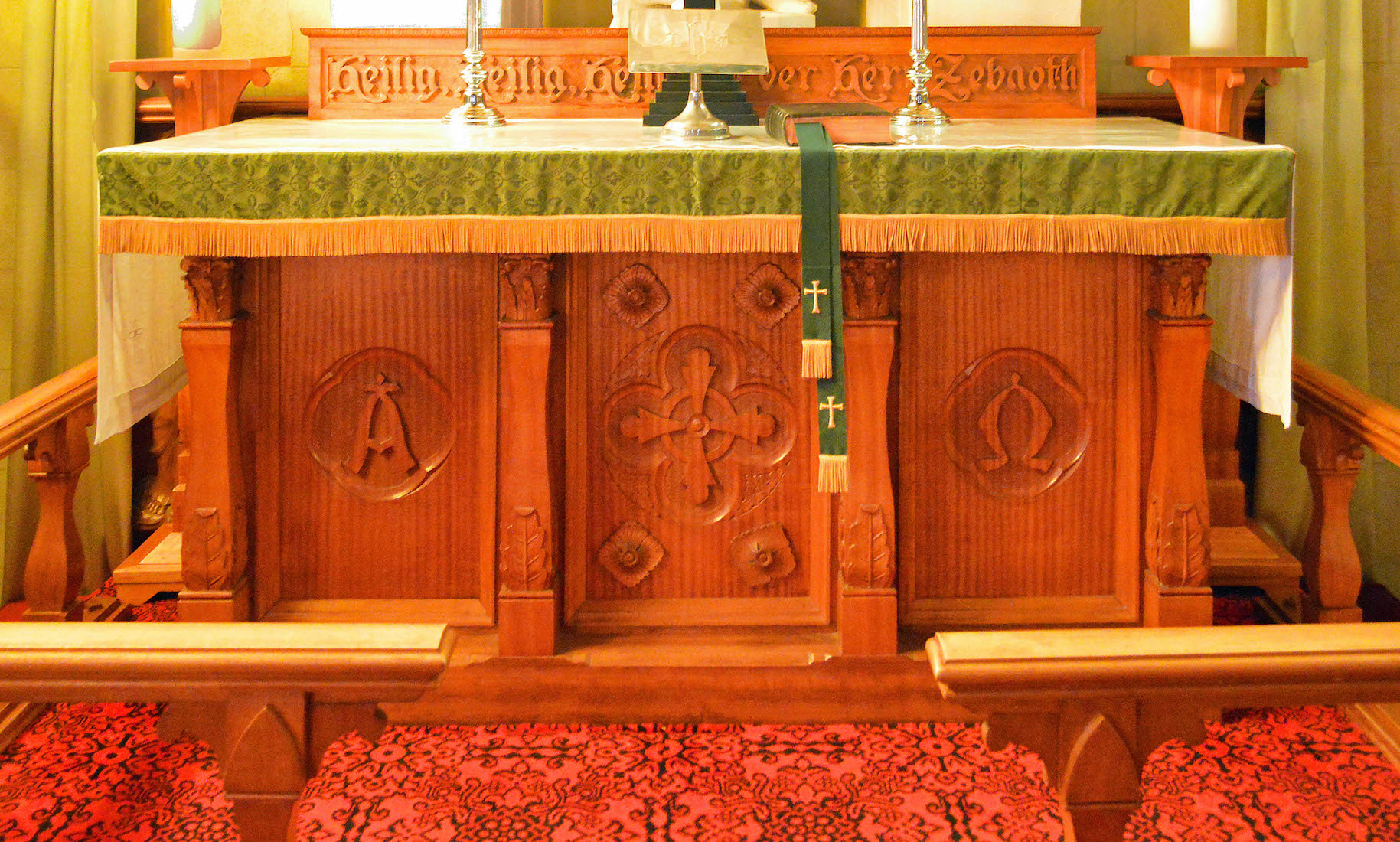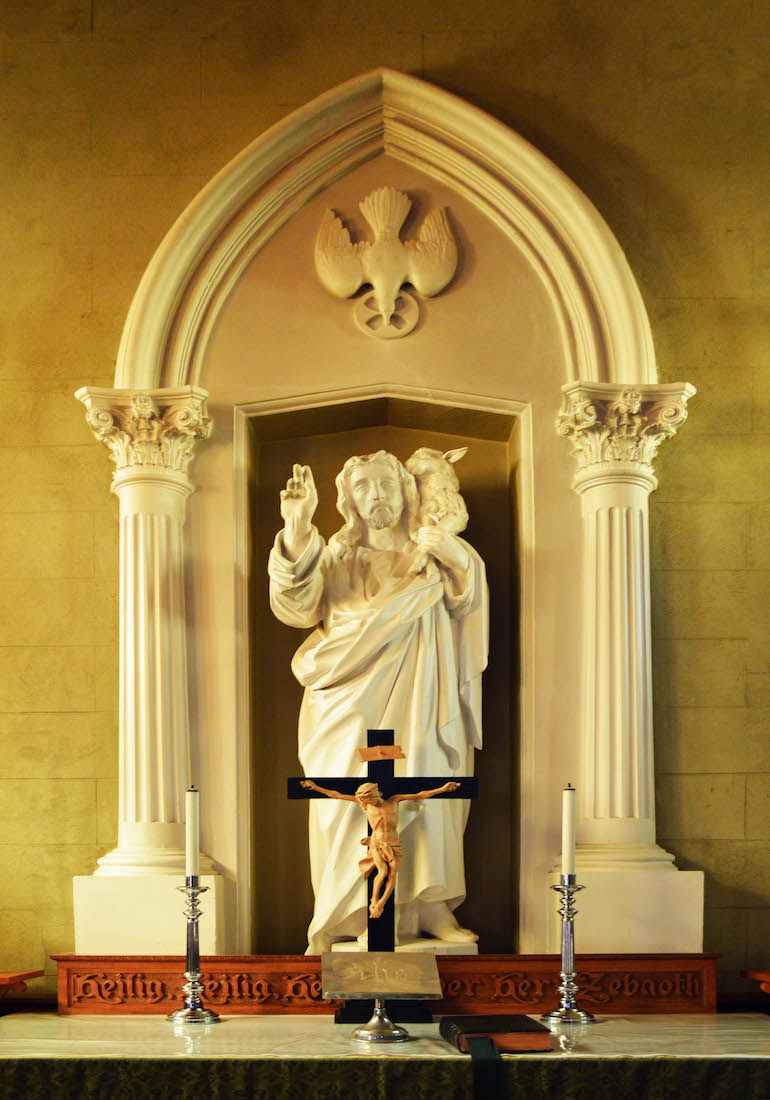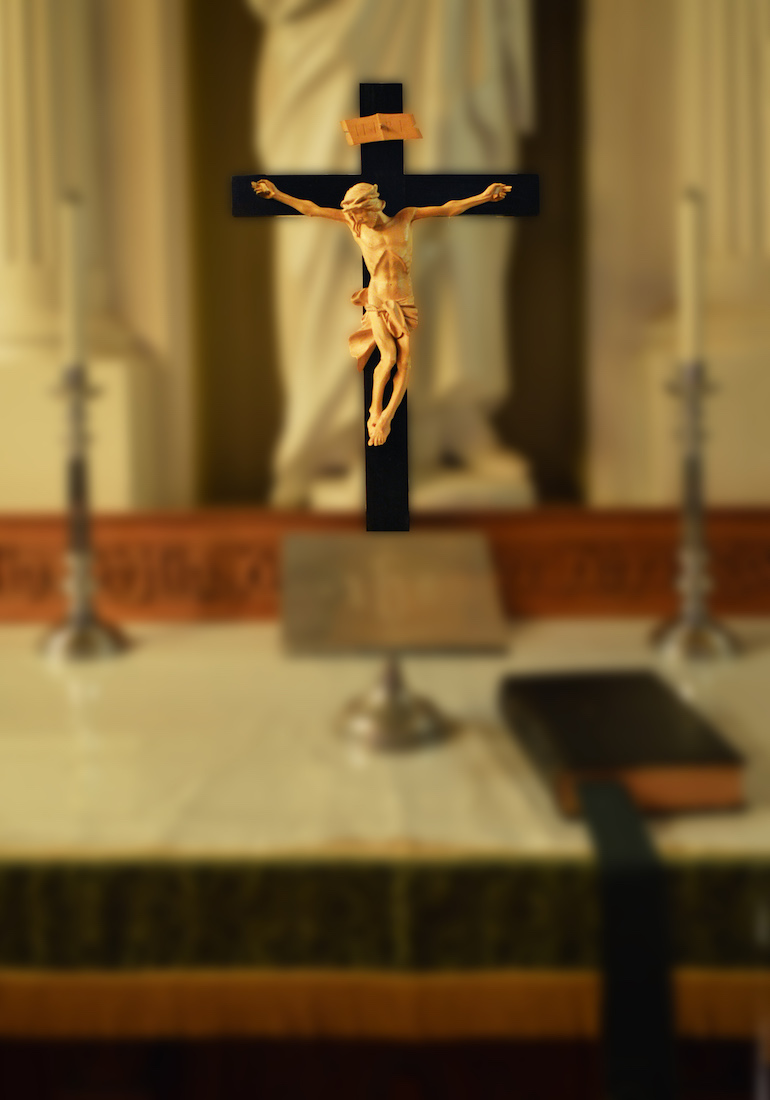22. BALCONY
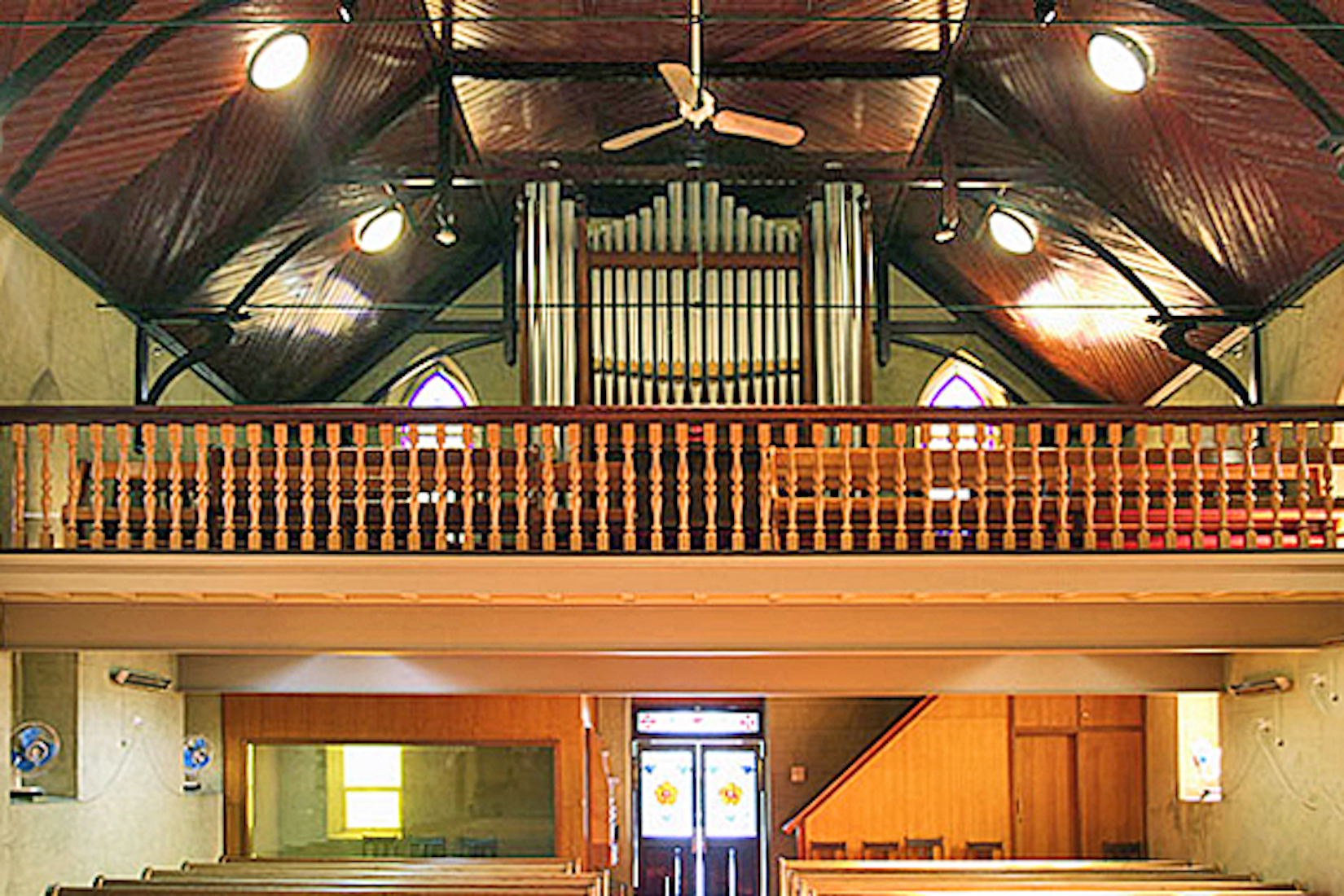
At the West end of the nave is a full width balcony supporting the pipe organ. Under the balcony on the South side is a room where parents with small children can enjoy the service. Stairs up to the balcony are on the other side. [Photo Credit: OHTA, Trevor Bunning]
23. THE ORGAN
This organ was the first of a number to be supplied in the district by J. E. Dodd. It features the Dulcissima stop – unique in Australia – and used on only a handful of instruments made by this builder. No such stops appear on the other organs in the Barossa Valley.
24. ORGAN – REVEALED!
This photograph of the organ shows the open console. The organ was altered in 1969 when the Cornopean was removed and was enlarged in 1982 when a Swell Mixture was added. The organ was repaired and enlarged in 1993 by George Stephens when he placed the Swell Mixture on the Great, replacing the Swell Mixture with a Nazard on the Swell. [Photo Credit: OHTA, Trevor Bunning]
25. BALCONY WINDOWS
Identical windows face out in a Westerly direction from the back of the balcony. These are similar to other windows in the Church, but without further ornamentation.
26. NORTH NAVE WALL
This side wall is plain, apart from one of the four statues which we shall look at shortly. There are two windows of interest on this wall.
27. NORTH WINDOWS
The window at left contains a portrait of Martin Luther. The Lutheran Church is primarily based on the teachings and politics of the 16th century German friar, church reformer, and theologian, Martin Luther. The window on the right is based on the famous painting ‘The Light of the World’ (1851–1853) by the English Pre-Raphaelite artist William Holman Hunt (1827–1910). It shows the figure of Jesus preparing to knock on an overgrown and long-unopened door, illustrating Revelation 3:20: ‘Behold, I stand at the door and knock; if any man hear My voice, and open the door, I will come in to him, and will sup with him, and he with Me’. According to Hunt: ‘I painted the picture with what I thought, unworthy though I was, to be by Divine command, and not simply as a good Subject.’ The door in the painting has no handle, and can therefore be opened only from the inside, representing ‘the obstinately shut mind’.
28. SOUTH NAVE WALL
The wall on this side is also plain, but there are in fact two interesting windows.
29. TWO SOUTH WINDOWS
The dramatic window at left requires some explanation – by someone who knows! It depicts a warrior carrying a banner with a golden cross on a red background. At the top of the window is a trifoil emblem with the ‘Lamb with Banner’ or ‘Agnus Dei’. The window is dedicated to Pastor R. Held and his wife – Pastor Held had a very long ministry in this Church from 1911 – 1949. The window at right carries an image of the suffering Christ with a crown of thorns.
30. FOUR STATUES
These four wooden statues were carved in Europe, and presented by a member, Mr G. E. Schutz, to mark the 25th anniversary of the Church. The second from the left is Moses, holding the tablets of the Law, and shown with horns – generally agreed to be based on a mistranslation of Exodus 34:29-30. Next is St Paul, shown with a sword – a reference to his early life, or an allusion to the Word of God? Next is St Peter, identifiable by the keys he is holding – the Keys of the Kingdom. This leaves the first statue at left, said to be Jeremaiah in early Church records. The figure is holding an object – but what? We would expect this to be an Old Testament prophet – giving us ‘the Law and the Prophets’.
31. FRONT NAVE
At centre we have the sanctuary area, but in front, from left to right there is the pulpit, the baptismal font, the lectern and Paschal candle, and at right, a prayer desk. The screen at extreme right indicates that modern technology has found a place in today’s services!
32. PULPIT
The neat timber pulpit is of a design commonly found in the Valley churches. We notice that the circular decorations near the base of the panels match the discs at the base of many of the windows. The Gospel is preached from the pulpit Sunday by Sunday.
33. BAPTISMAL FONT
The words around the rim of the font are (in German) from Mark 16:16 : ‘He who believes and is baptized will be saved’. Babies and young children are baptised (christened) as a sign of entry into the Christian life and the Christian church.
34. LECTERN
The eagle lectern supporting the Bible is found in many churches, although this is a very individual carved lectern. The eagle itself may be a reference to the Evangelist St John whose gospel is significantly different in style and content from the remaining three, or there may be an allusion to Isaiah 40:31 - ‘But those who hope in the LORD will renew their strength. They will soar on wings like eagles; they will run and not grow weary, they will walk and not be faint.’ The Paschal candle is also known as the Easter candle, and is usually used in the context that ‘Jesus is the Light of the World’.
35. PRAYER DESK
This chair and desk is likely used by the celebrant during a service.
36. SANCTUARY
Our exploration of St John’s Church finally brings us to tthe sanctuary. This is impressive with the dramatic roof lines above the symmetric altar arrangement. Members of the congregation would come to kneel at the altar rail to receive the Elements of the Eucharist.
37. ALTAR
Across the back of the altar is written, in German, ‘Holy, Holy, Holy is the Lord God of Hosts’. The outer front panels contain the symbols Alpha and Omega – the first and last letters of the Greek alphabet, and used in Revelation 22:13 to describe Christ as ‘the First and the Last, the Beginning and the End’. The central symbols are probably a cross, Lutheran roses, crowns and a Victor’s palm fronds.
38. THE GOOD SHEPHERD
The central image is a statue of Christ the Good Shepherd, bearing a lamb on his shoulders, and giving a blessing with his right hand. This statue was created and donated at the same time as the other four statues. The descending dove above is a reference to the Holy Spirit.
39. CRUCIFIX
The Bible and crucifix are to be found on the altar of each of the Valley Lutheran churches. The Word of God, and the redeeming sacrifice of Christ are vital parts of Lutheran (and Christian) faith. This completes our tour of St John’s Church.
CONCLUSION
I hope you have enjoyed visiting St John’s Lutheran Church with me. My thanks to Pastor Guntars Baikovs, and especially Roger Both who gave up his valuable time to show us around both St Paul’s and St John’s.
I am very happy to receive any corrections or constructive comments about this site: the best websites are those which have no errors! I am grateful to my wife Margie who came with me and who has done much valuable proof reading.
St John’s has a minimal website with link
http://stjohns-tanunda.lutheran.org.au/
However, this site has a further link to a site for the new combined Grace Lutheran Church.
With a couple of acknowledged exceptions, the photos on this site are all mine, and can also be found in higher resolution at:
https://www.flickr.com/photos/paulscottinfo/albums/
The exceptions are two photos taken by Trevor Bunning, and reproduced with permission from the Organ Historical Trust of Australia. Their site relating to the St John’s organ has link:
https://www.ohta.org.au/organs/organs/TanundaStJohns.html
Site created: 10 / 2020
Paul Scott
